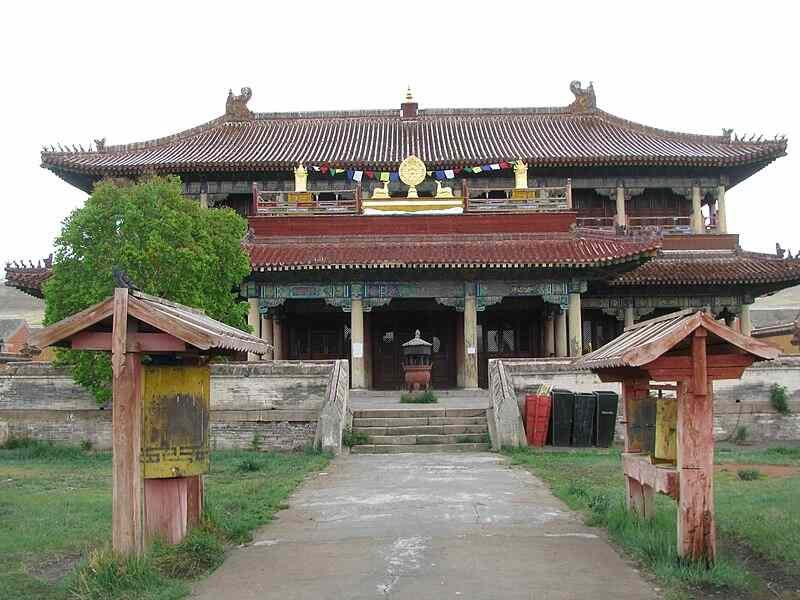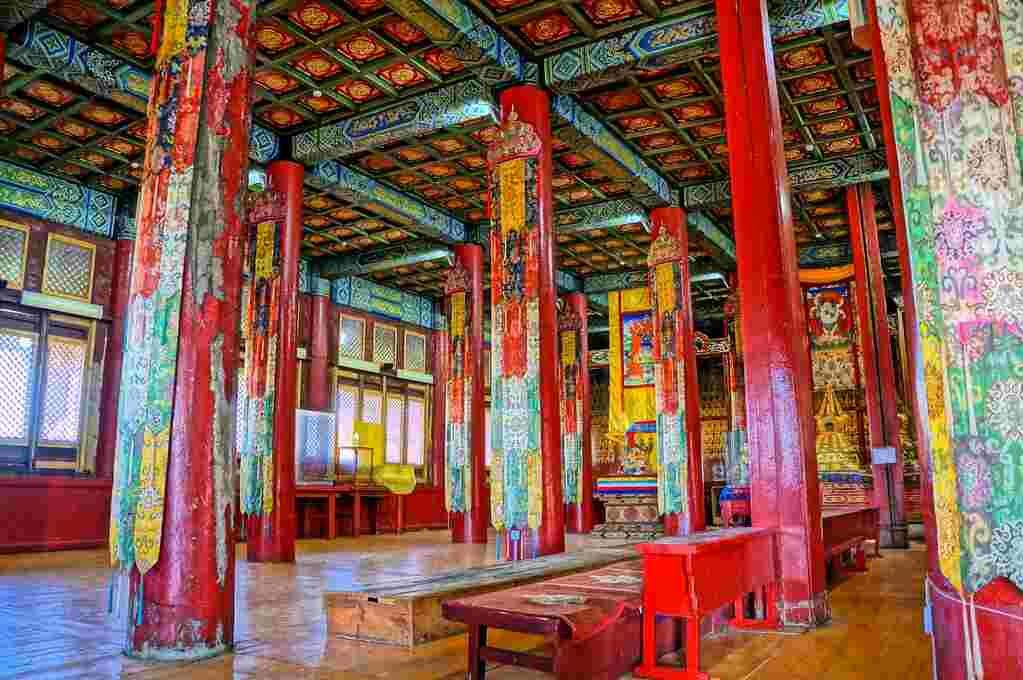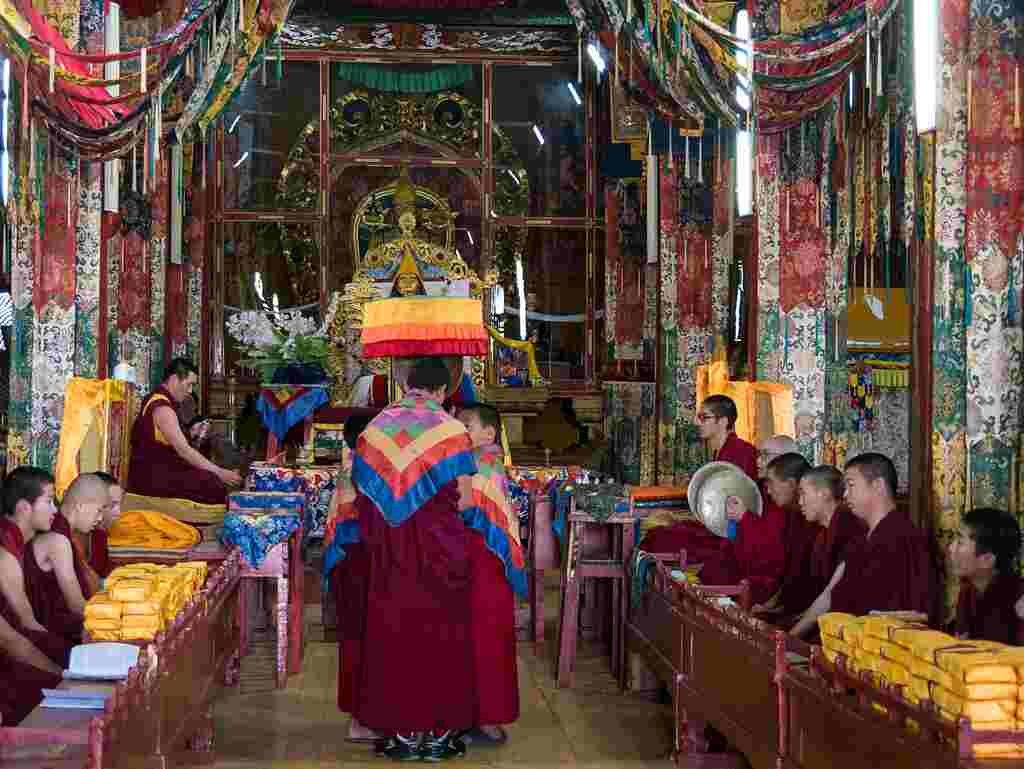Nestled in the serene Iven Valley near the Selenge River, at the foot of Mount Buren-Khaan in northern Mongolia, lies the magnificent Amarbayasgalant Monastery. Known as the “Monastery of Tranquil Felicity,” this sacred site is one of Mongolia’s most significant Buddhist monastic centers.
Established in the 18th century, the monastery has survived centuries of social and political upheaval, earning its status as a testament to the endurance of Mongolian Buddhism. Today, Amarbayasgalant Monastery stands not only as a place of worship but as a historical and cultural gem that draws visitors from around the world.

The History of Amarbayasgalant Monastery
Amarbayasgalant Monastery, one of Mongolia’s most revered Buddhist sites, has a fascinating history that intertwines spiritual significance, architectural grandeur, and cultural resilience.
Founding and Early Years
The monastery was established between 1727 and 1736 by the order of the Yongzheng Emperor of the Qing Dynasty. It was constructed to honor and house the remains of Zanabazar, the first Jebtsundamba Khutuktu, who was a prominent spiritual leader and a revered figure in Tibetan Buddhism in Mongolia.
Zanabazar, also known as Ondor Gegeen Zanabazar, was not only a religious leader but also a renowned artist and sculptor, contributing significantly to Mongolian culture and Buddhism.
The name “Amarbayasgalant” is derived from two children, Amur and Bayasgalant, who were discovered playing on the site during its initial survey for construction.
During its peak, Amarbayasgalant housed over 6,000 monks and boasted more than 40 temples. However, it faced significant challenges during the Stalinist purges of the late 1930s, which led to the execution of many monks and the destruction of numerous artifacts. Remarkably, it is one of the few monasteries that partially escaped total destruction during this tumultuous period.
The Purges of the 1930s
The 1930s were a dark period for Amarbayasgalant Monastery, as it was subjected to the brutal purges carried out by the communist regime in Mongolia. Many monasteries across the country were destroyed, and Amarbayasgalant was no exception.
The monastery’s artifacts, including thangkas (Buddhist paintings), statues, and manuscripts, were looted, and many monks were executed. Despite these devastating losses, the main structures of the monastery survived, albeit in a dilapidated state.
Restoration and Revival
In 1943, Amarbayasgalant Monastery was placed under state protection, recognizing its historical and cultural significance. However, it wasn’t until 1988 that serious restoration efforts began, supported by UNESCO and private donors. These efforts aimed to restore the monastery to its former glory and preserve it as a site of cultural and religious importance.
Today, 28 of the original temples remain, and the monastery continues to be a site of pilgrimage and spiritual significance. The restoration work has helped revive the monastery’s role as a center for Buddhist practice and a symbol of Mongolia’s rich cultural heritage.

Architectural Marvel of Amarbayasgalant Monastery
The architectural style of Amarbayasgalant is predominantly Chinese but incorporates elements from Tibetan and Mongolian designs. The monastery is laid out symmetrically along a north-south axis, with important buildings arranged sequentially.
This design resembles that of the Manchu-style Imperial Palace, showcasing a harmonious blend of aesthetics and functionality.
Today, only 28 temples remain within its original walled complex, which measures approximately 207 by 175 meters. The structures are adorned with intricate carvings and vibrant colors that reflect the artistic traditions of Mongolia. Notable buildings include:
Tsogchin Dugan: The centerpiece of the monastery is the Tsogchin Dugana (Main Assembly Hall), which is an architectural masterpiece. This grand hall is where the monks gather for prayers and ceremonies.
The structure features a double-tiered roof adorned with intricate tile work and enamel ceilings. The roof’s upturned eaves and ornate carvings are typical of Chinese temple architecture, while the interior decorations reflect Tibetan Buddhist iconography.
Mahranz Temple: A significant site for religious ceremonies.
Yanpai Gate: The main entrance that welcomes visitors with its ornate decorations.

Spiritual Significance of Amarbayasgalant
Amarbayasgalant Monastery holds a deep spiritual significance for Mongolian Buddhists. As the final resting place of Zanabazar, it is considered a sacred site of pilgrimage. his remains were transferred there in 1779, after the monastery was completed in 1736.
Every year, thousands of Buddhists make the journey to pay homage to the revered religious leader, meditate, and participate in important rituals.
The monastery follows the Gelugpa school of Tibetan Buddhism, which emphasizes the importance of monastic discipline and the teachings of the Dalai Lama.
Daily rituals at the monastery include prayer ceremonies, offerings, and meditation sessions, all of which are conducted in the peaceful and serene environment of the monastery. Visitors often report feeling a profound sense of calm and spiritual renewal after spending time at Amarbayasgalant.
In addition to its religious importance, the monastery is also a hub for cultural preservation. Traditional Buddhist festivals, such as Tsam dances and the annual Maitreya festival, are celebrated with great fervor, offering visitors a chance to witness the vibrant rituals and customs that have been passed down through generations.
Visiting Amarbayasgalant Monastery
Amarbayasgalant Monastery is located in the Selenge Province of northern Mongolia, it is about 60 kilometers southwest of Erdenet and approximately 360 kilometers Ulaanbaatar.
The remote location adds to the monastery’s allure, offering visitors a peaceful retreat from the hustle and bustle of modern life. The journey to Amarbayasgalant is an adventure in itself, taking travelers through vast steppes, rolling hills, and picturesque valleys.
For those interested in visiting, the monastery is open year-round, although the best time to visit is during the warmer months, between June and September, when the weather is more favorable for outdoor exploration.
Visitors can stay in ger camps near the monastery, where they can experience traditional Mongolian hospitality and enjoy the stunning natural scenery.
Once at the monastery, there is much to explore. The complex consists of over 28 surviving temples, each with its own unique history and significance. Guided tours are available for those who wish to learn more about the architecture, history, and religious practices of the monastery.
Entry fees to the monastery are minimal, making it an accessible destination for travelers on any budget. Additionally, there are no strict dress codes, but visitors are encouraged to dress modestly out of respect for the religious nature of the site.

Cultural and Natural Surroundings
Amarbayasgalant Monastery is not only a spiritual haven but also a place of breathtaking natural beauty. Surrounded by the rolling hills and vast grasslands of the Iven Valley, the monastery offers stunning panoramic views of the Mongolian landscape. The serene environment provides an ideal setting for meditation, photography, and nature walks.
For those interested in the flora and fauna of Mongolia, the area around the monastery is home to a variety of wildlife, including birds, deer, and wildflowers. The nearby Orkhon River, one of Mongolia’s longest rivers, adds to the picturesque setting, and many visitors take the opportunity to explore the surrounding nature on horseback or foot.
The cultural significance of the region extends beyond the monastery itself. The Selenge Province is rich in Mongolian history, with numerous archaeological sites and nomadic communities that continue to practice traditional Mongolian ways of life.
Visitors to Amarbayasgalant often combine their trip with visits to Erdenet, Mongolia’s second-largest city, or Kharkhorin, the ancient capital of the Mongol Empire.
♣♣You May Also Like: ⇓
- Erdene Zuu Monastery, Mongolia: A Vibrant Heritage
- Wat Phra Kaew Chiang Rai, Thailand: A Beautiful Treasure
- Colorful Wat Arun: Beautiful Temple of Dawn in Thailand
- Beautiful Mahabodhi Temple: Heart of the Spiritual Glory
- Wonderful Budhakhol, Odisha: Heart of the Faith & Miracle
Conclusion
Amarbayasgalant Monastery stands as a testament to the enduring legacy of Buddhism in Mongolia. Its rich history, stunning architecture, and vibrant spiritual life make it a significant cultural landmark.
As both a pilgrimage site and a center for education, the monastery continues to inspire devotion and learning among Mongolians and visitors alike. The ongoing restoration efforts ensure that this cherished institution will remain a beacon of spiritual and cultural significance for generations to come.
Whether one is seeking spiritual enlightenment or simply a deeper understanding of Mongolian culture, a visit to Amarbayasgalant Monastery is an enriching experience that should not be missed.
FAQs:
1. What is Amarbayasgalant Monastery?
Amarbayasgalant Monastery is one of the largest and most significant Buddhist monasteries in Mongolia, dedicated to Zanabazar.
2. Who was Zanabazar?
Zanabazar was the first Bogd Gegeen and a prominent figure in Mongolian Buddhism, known for his contributions as a spiritual leader and artist.
3. When was Amarbayasgalant Monastery built?
The monastery was constructed between 1727 and 1736 under the command of the Manchu Emperor Yongzheng.
4. What architectural styles are present at the monastery?
The architecture primarily reflects Chinese styles with influences from Tibetan and Mongolian designs.
5. Is Amarbayasgalant Monastery open to tourists?
Yes, the monastery is open to tourists year-round, although it’s advisable to check for any seasonal restrictions.
6. How can I reach Amarbayasgalant Monastery?
The monastery can be accessed via a road from Erdenet; it typically takes about 8-10 hours to drive from Ulaanbaatar.
7. How did the monastery survive during the Stalinist purges?
Unlike many other monasteries in Mongolia, Amarbayasgalant partially survived due to its remote location and local support.
8. Are guided tours available at Amarbayasgalant?
Yes, guided tours are available for those interested in learning more about its history and architecture.